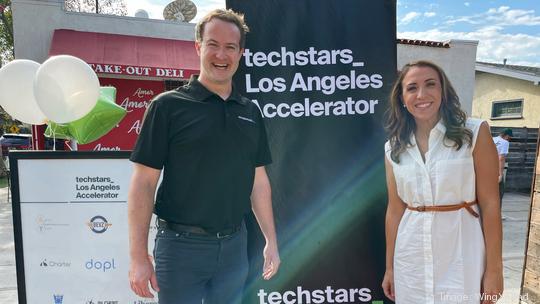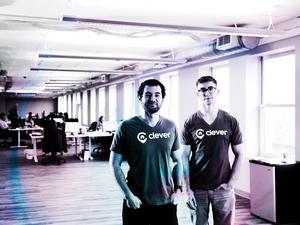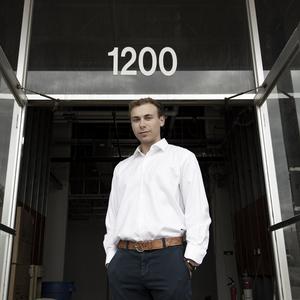
During her tenure as a journalist with television station KTVI Fox 2 in St. Louis, Michelle Madaras often used drones to gather videos for news stories.
Some of the stories she covered involved interacting with other drone users, such as police and fire departments, and it wasn’t unusual for the group to bond over similar pain points.
“We all commiserated over the same things, which was the drones that we were using, those professional grade systems, fly for like 20 minutes, they carried a camera that’s not even as good as your iPhone and really don't work in all weather situations,” Madaras said.
Today, as co-founder and chief customer officer of St. Louis startup WingXpand, Madaras is seeking to build a better drone that flies longer and takes better video. It also comes with another twist: It can fit into a backpack.
Madaras and her husband, James Barbieri, a former aerospace engineer at Boeing (NYSE: BA) and intelligence analyst for the U.S. Department of Defense, launched WingXpand in April. The upstart firm has developed a drone its founders believe will be used in a variety of locations, from the battlefield to farm fields.

WingXpand describes its drone as a “plane in a pack,” with a portable design using patented technology that allows its wings to be stored in a backpack and expand to a seven-foot wingspan. The startup’s drone has a fixed-wing design, similar to an airplane, as opposed to being a quadcopter that uses four rotors to fly, a more traditional design for drones.
The drone developed by WingXpand includes six parts that can be stored in a backpack and that the startup says can be assembled in under two minutes.
Watch the video below to see how WingXpand's drones are assembled after being stored in a backpack.
While its ability to fit into a backpack is novel, Barbieri and Madaras said that’s not the only selling point of their drone. They said it can also fly five times longer — more than a 1,000 acres in a single flight — than a traditional drone, can use a high-resolution camera and carries 10 times more data collection tools than a typical drone.
WingXpand expects to deliver its first units by the end of the year. It has signed letters of intent with customers, though it declined to name them. The startup did not disclose a specific price for its drones, saying costs will be dependent on its customers’ needs. WingXpand said its drones are made in the U.S., but declined to name its manufacturer.
As it approaches commercialization, WingXpand expects its drones to appeal to a wide range of users. One area it is targeting is public safety and military users. Barbieri said the inspiration for creating WingXpand came after hearing about soldiers not using drones because the devices had to be carried in “huge, really cumbersome” cases and could be difficult to use.
“Fast forward to today, all of those problems still exist with many defense drones,” said Barbieri, WingXpand's CEO.
WingXpand also is eyeing commercial users too. It has positioned its drone as a tool for farmers to monitor their crops and livestock, for inspectors and surveyors, and for insurance companies to evaluate properties before and after damage.
WingXpand is one of 12 companies that won a spot in the TechStars LA & Space Accelerator program, a business development program that is being staged with the U.S. Space Force and NASA’s Jet Propulsion Laboratory. The accelerator spot brings a $120,000 investment, the first outside investment in the company. WingXpand expects to bring on additional capital and is seeking to raise a pre-seed funding round.
While the TechStars program has brought WingXpand to Los Angeles, its founders said the company’s future will continue to be in St. Louis. It has its headquarters at the Geospatial Innovation Center inside the T-Rex entrepreneur center in downtown St. Louis. With St. Louis’ strengths in agriculture technology, defense manufacturing and geospatial technology, Barbieri said it's the ideal home for the startup.
“For us, St. Louis is a great place. We’re so happy to call it home and our place of business for a lot of great reasons,” he said. “We see the value of ultimately having a large presence and we will continue down that path.”











